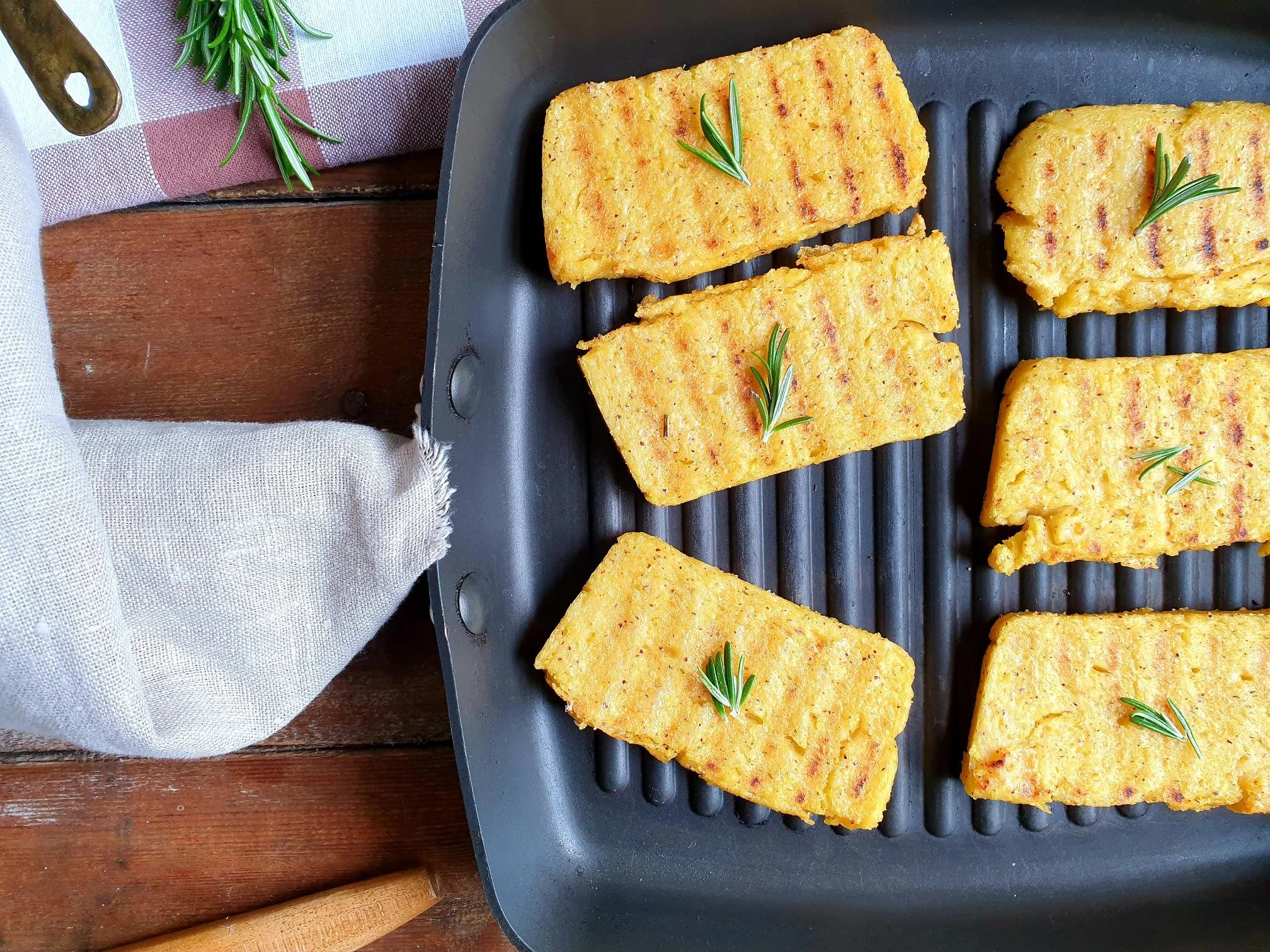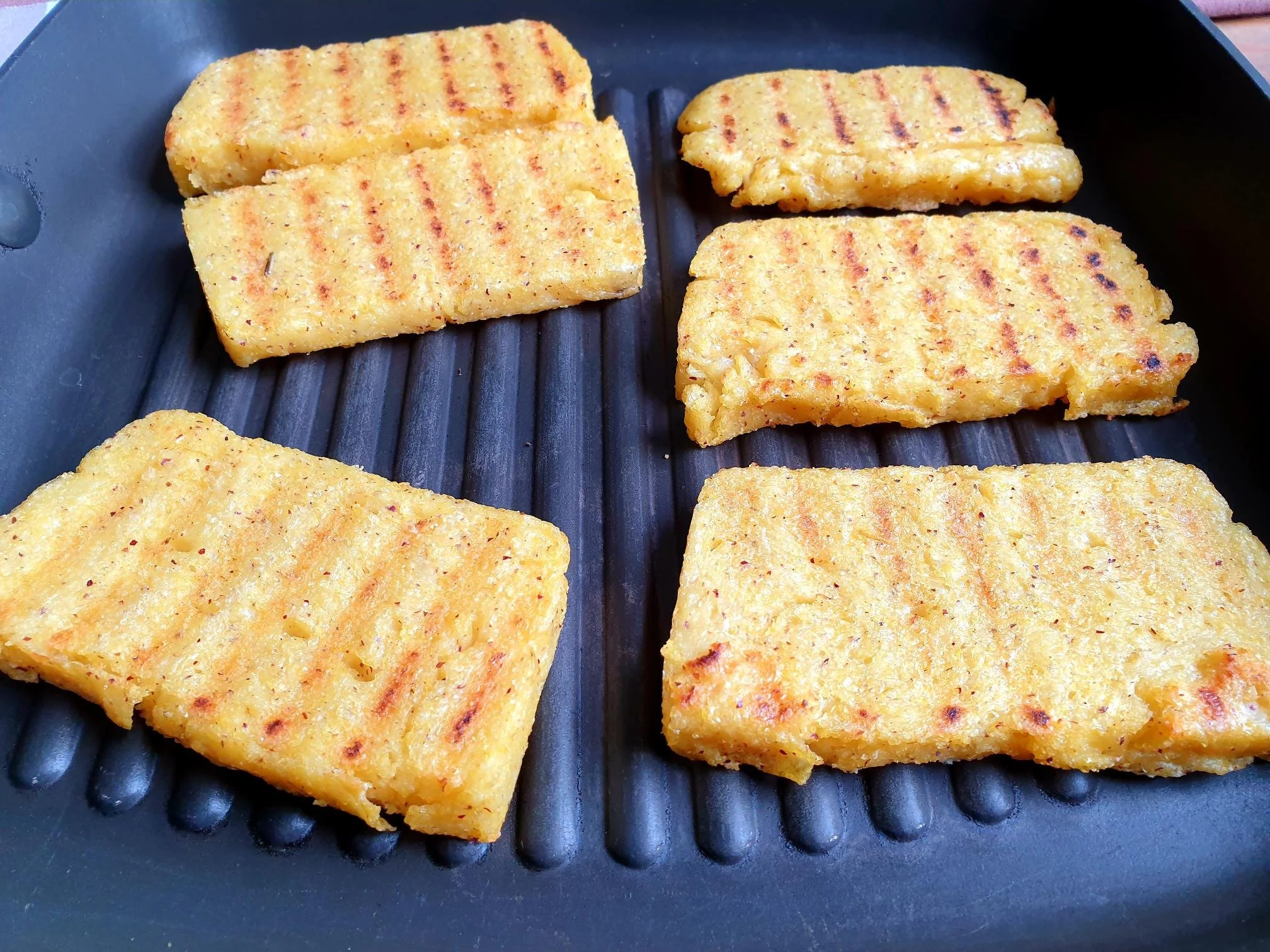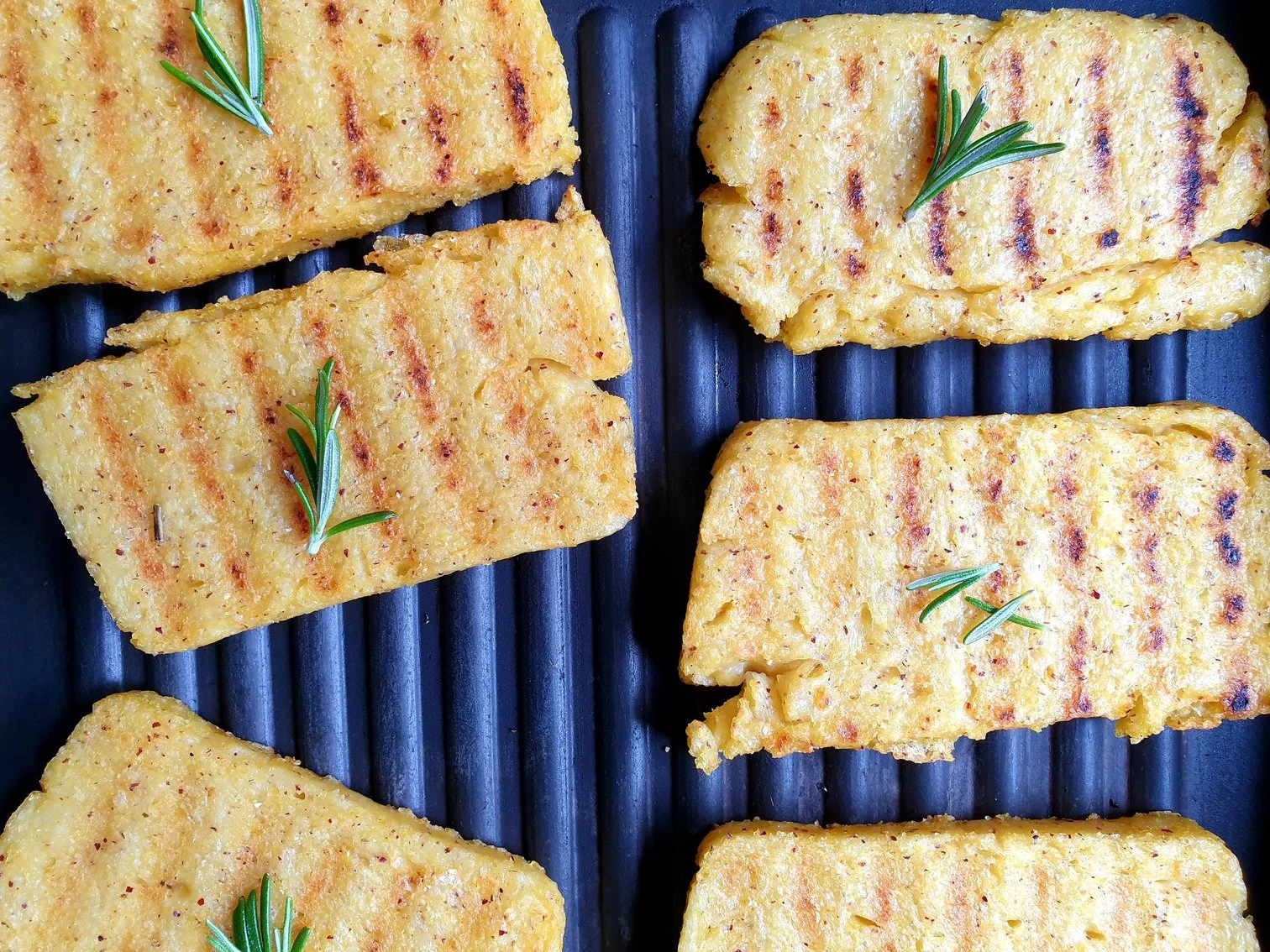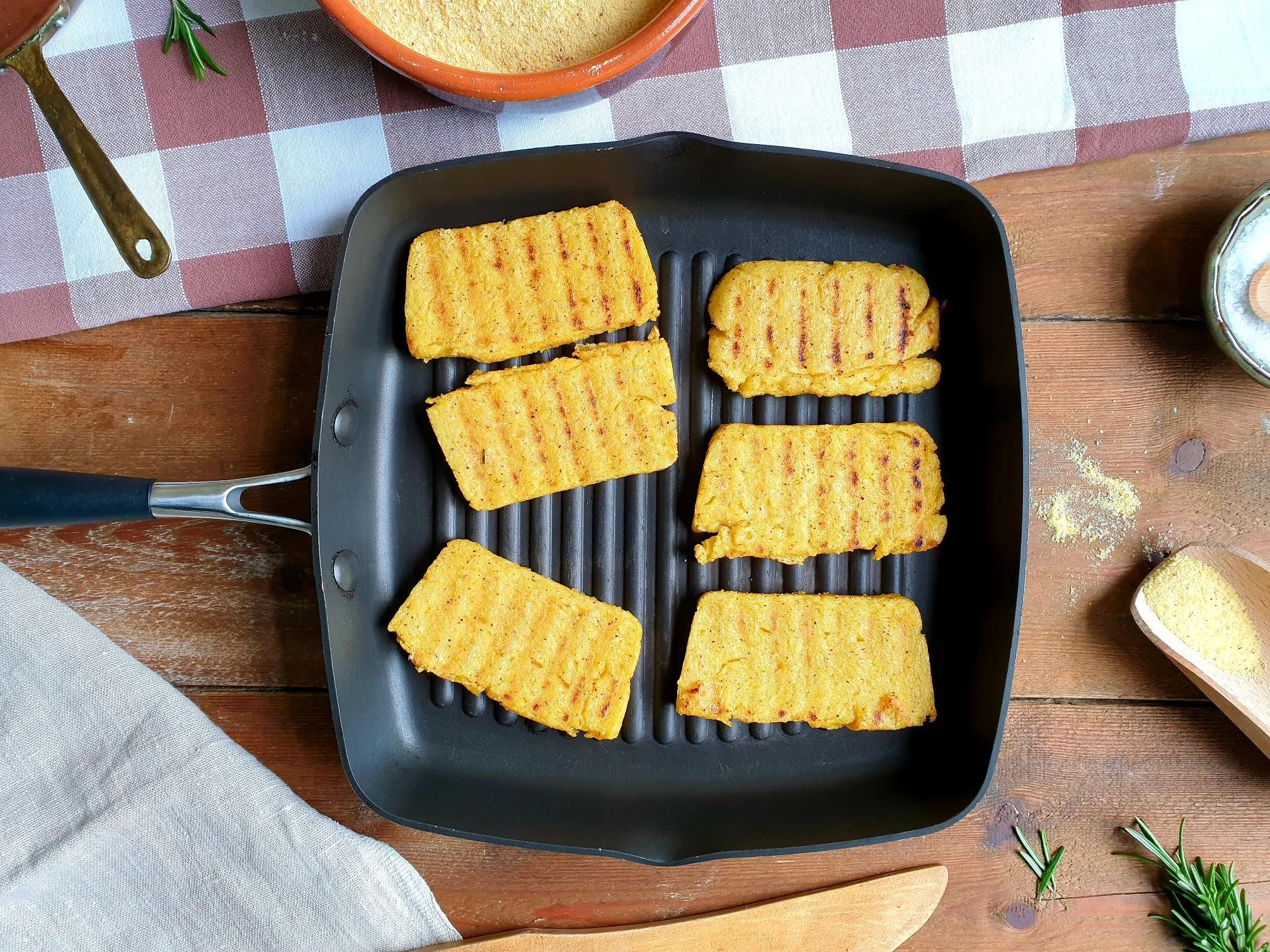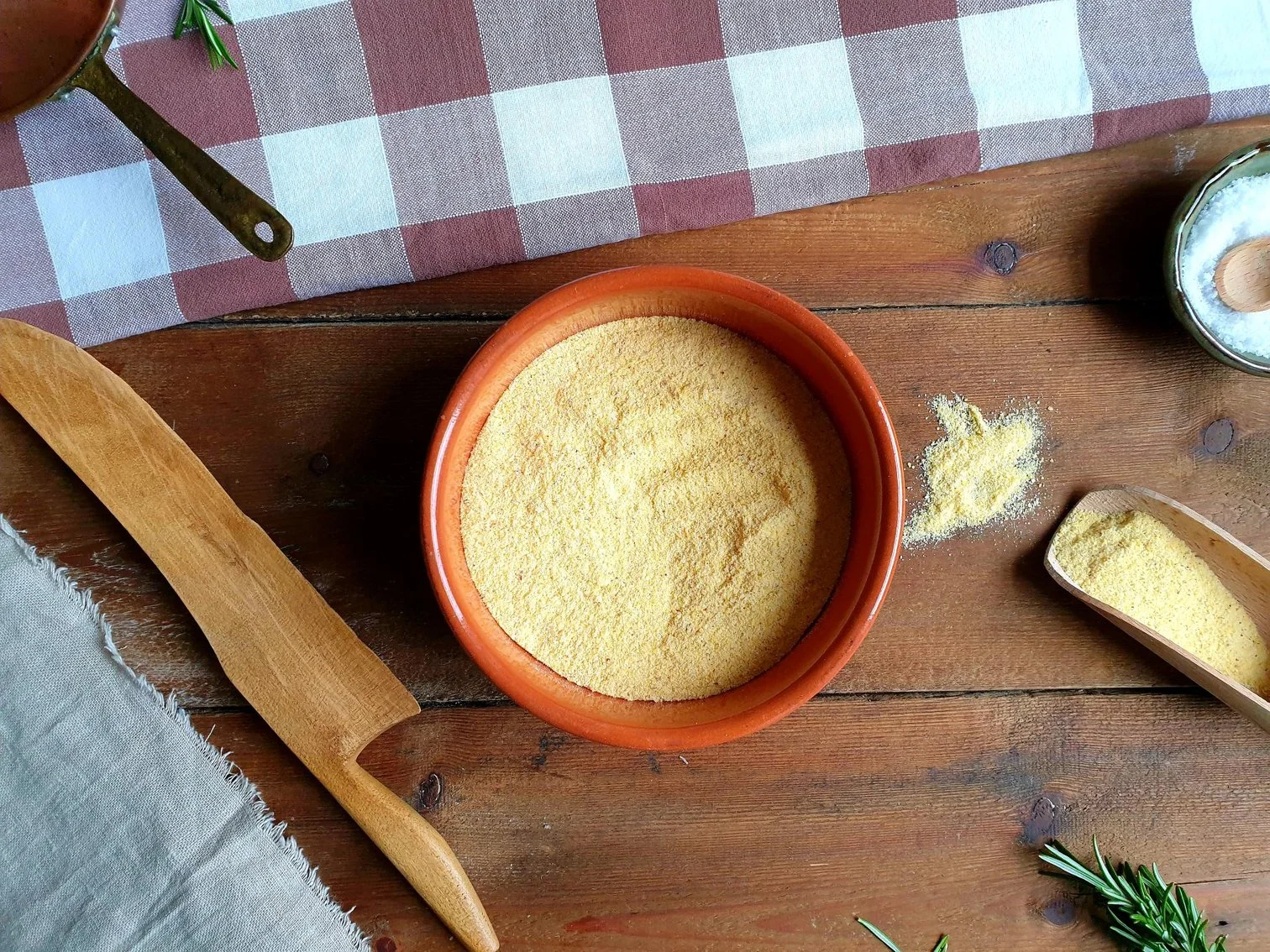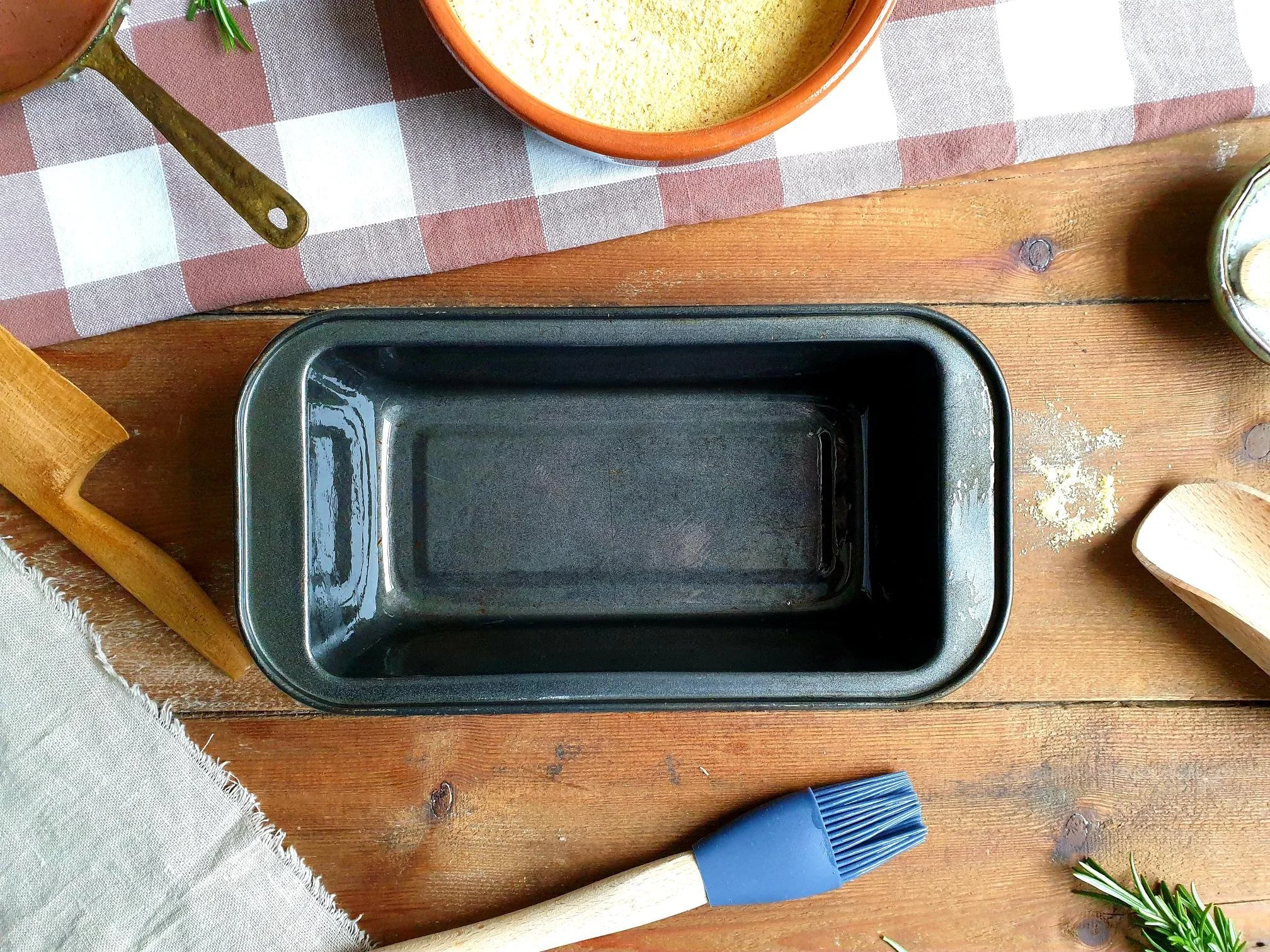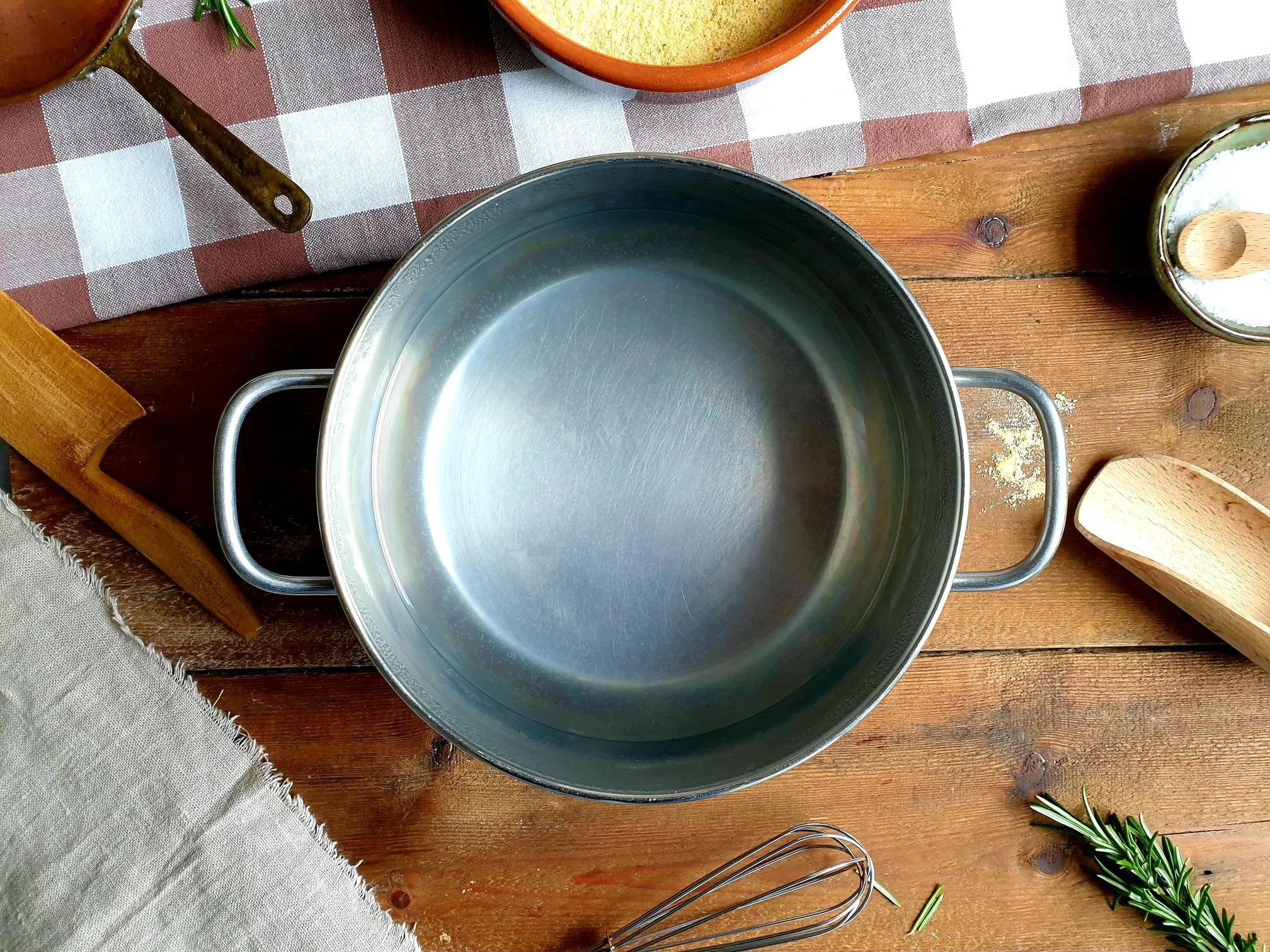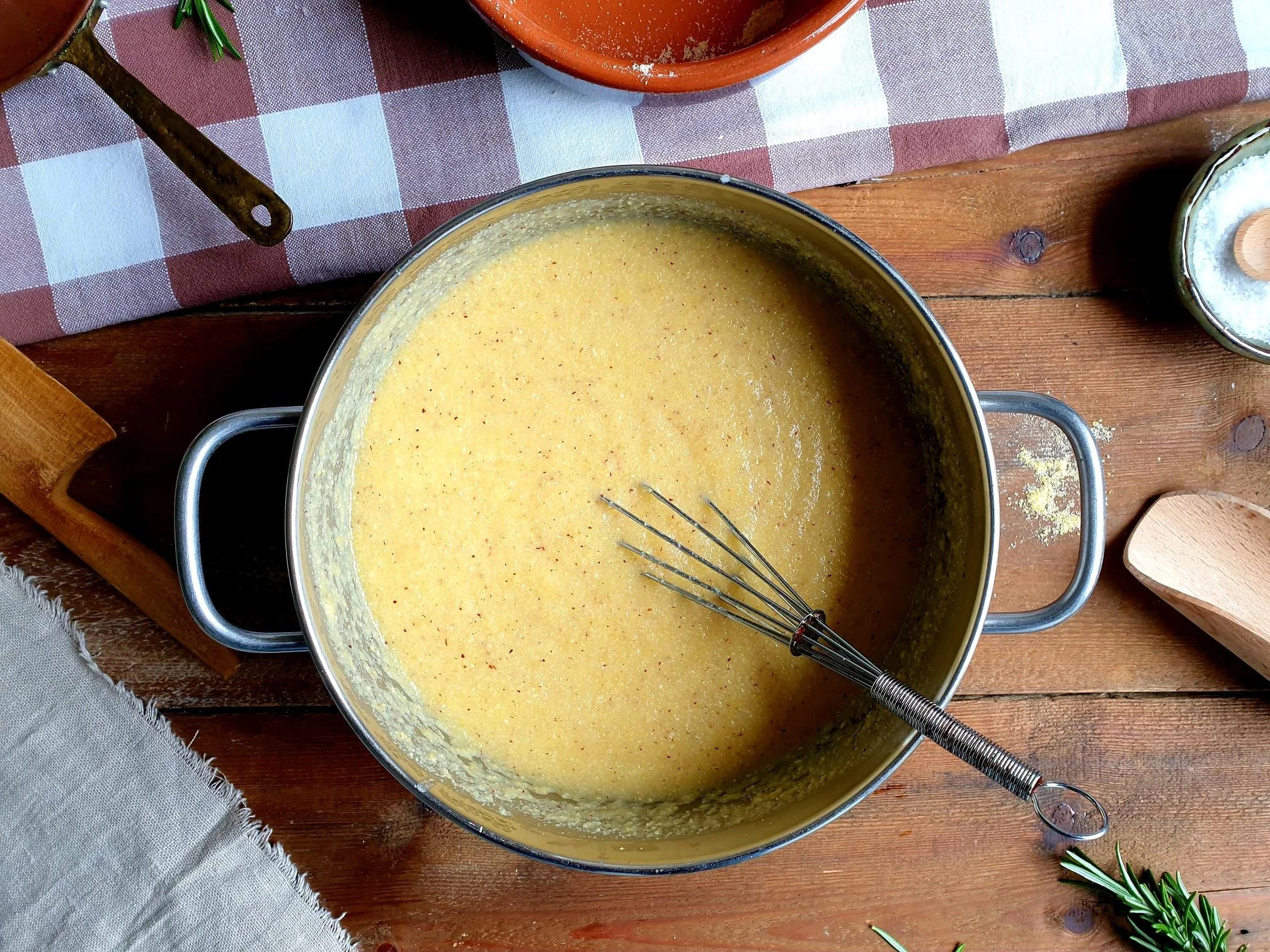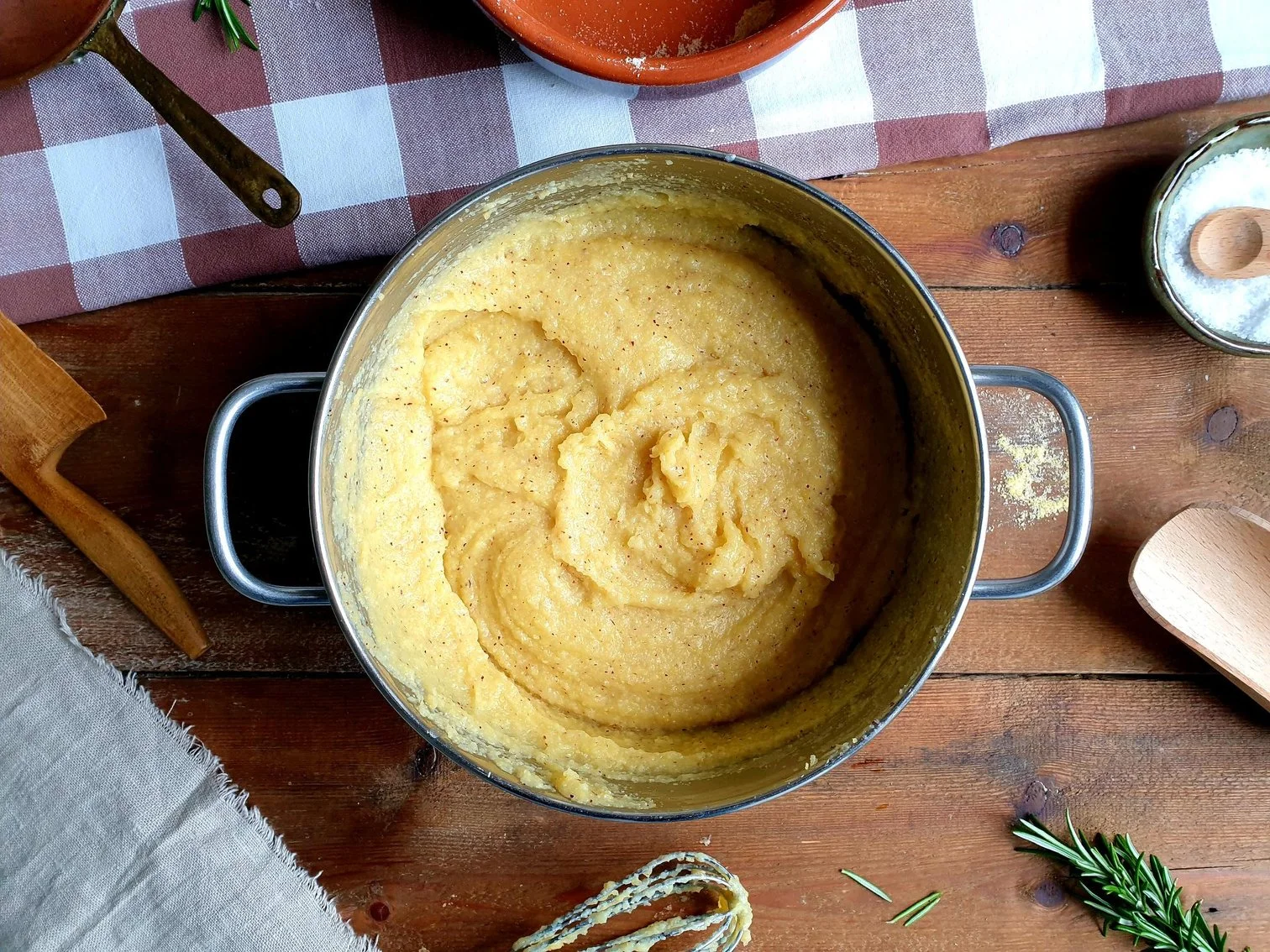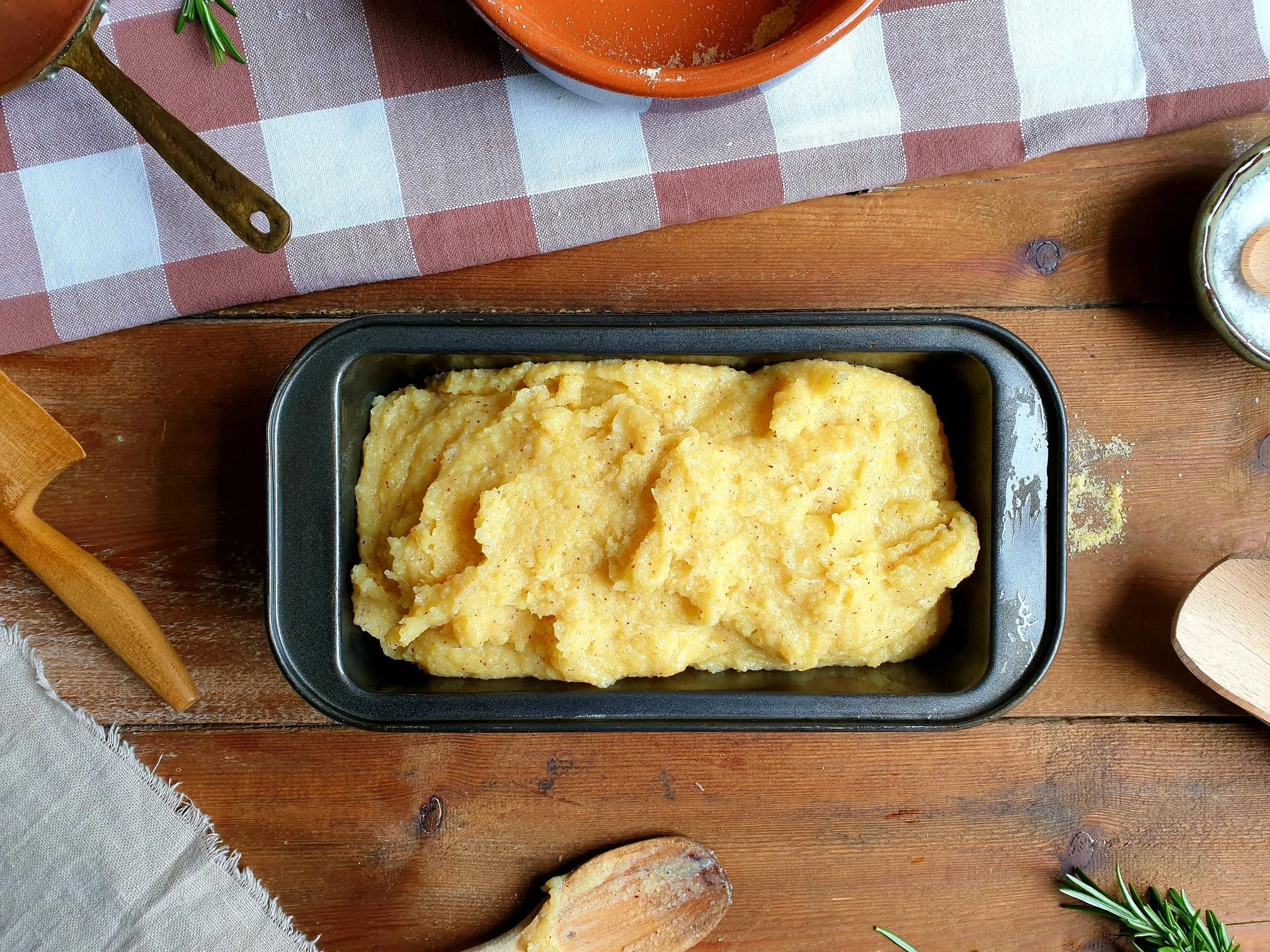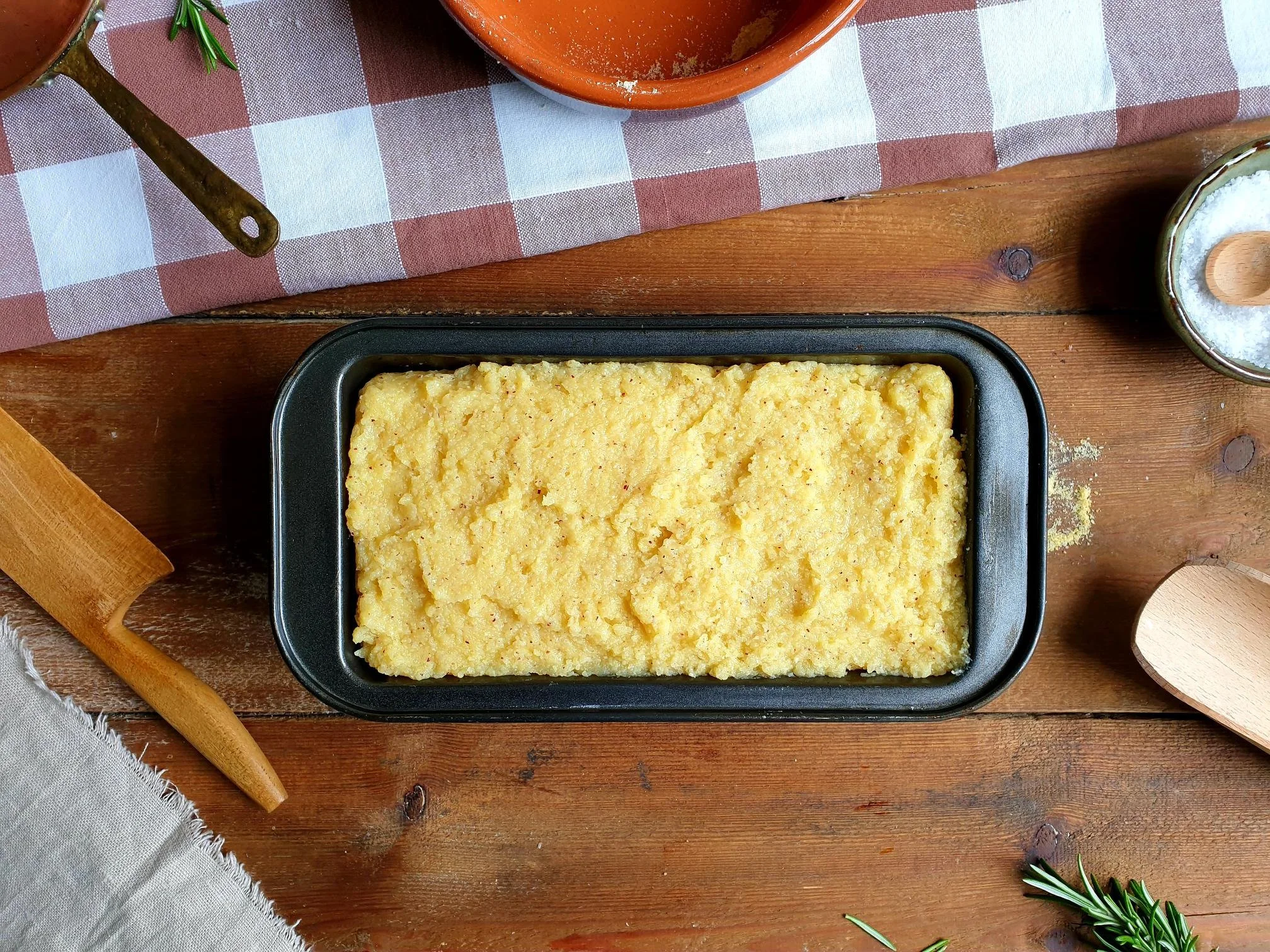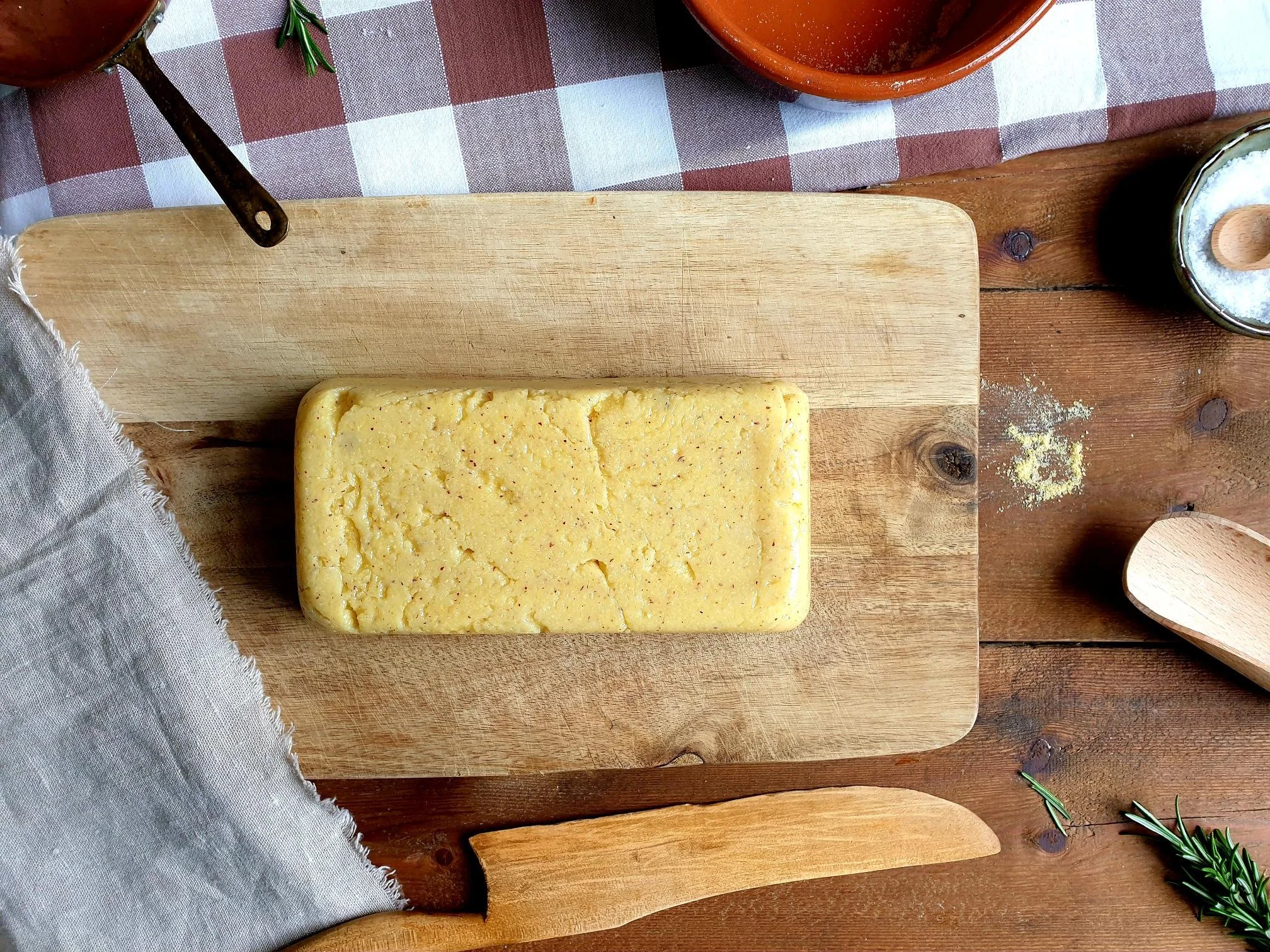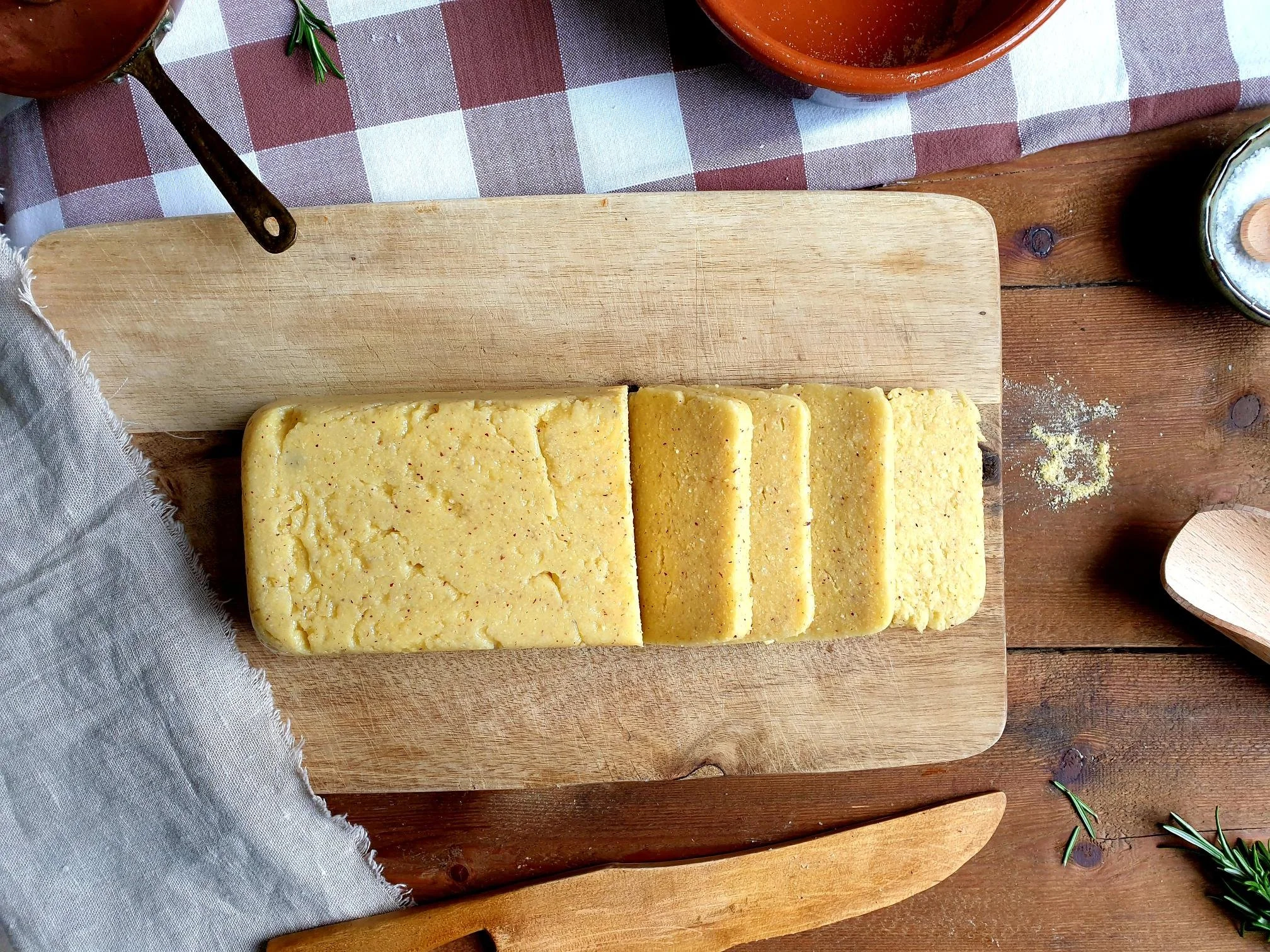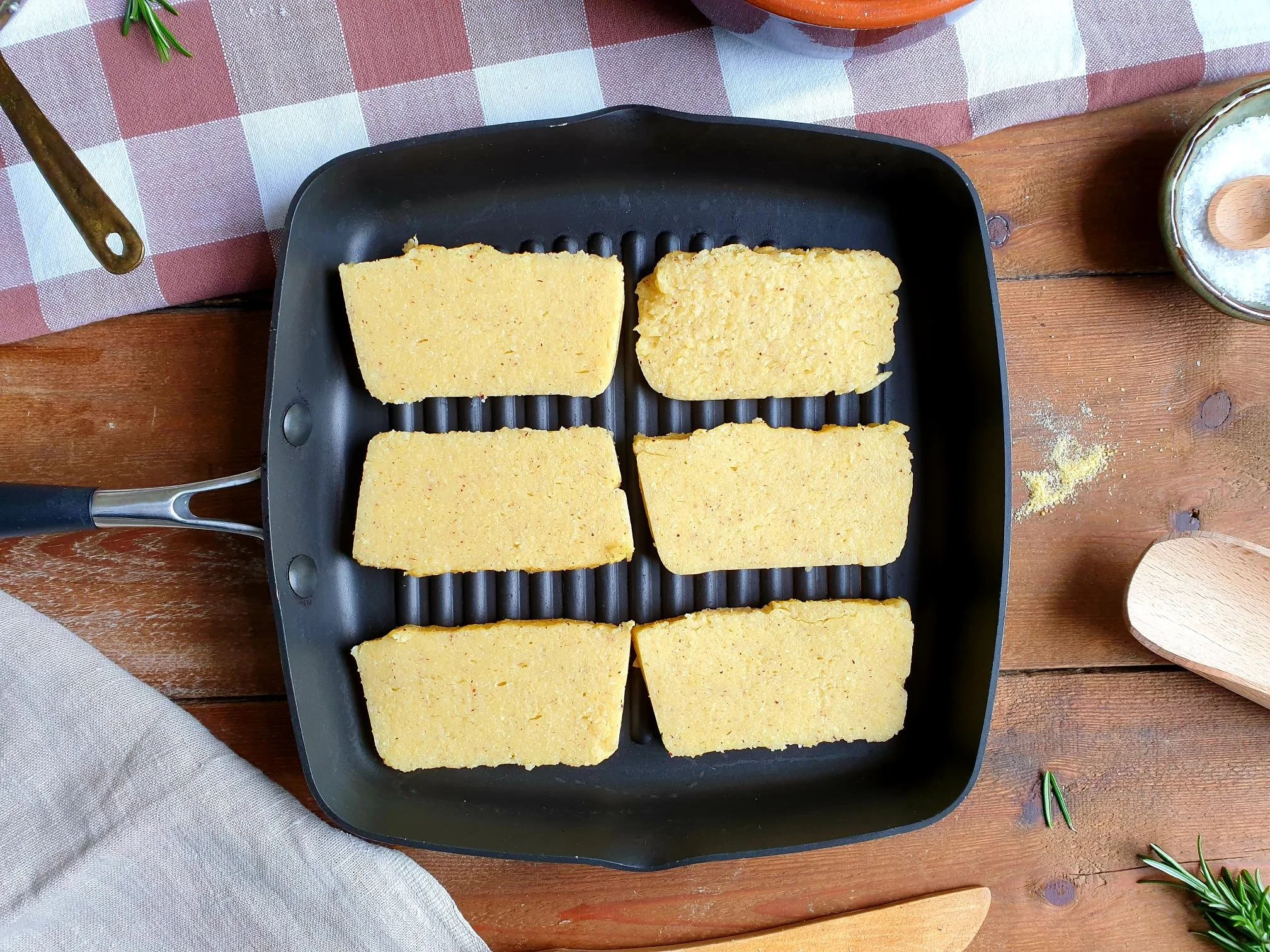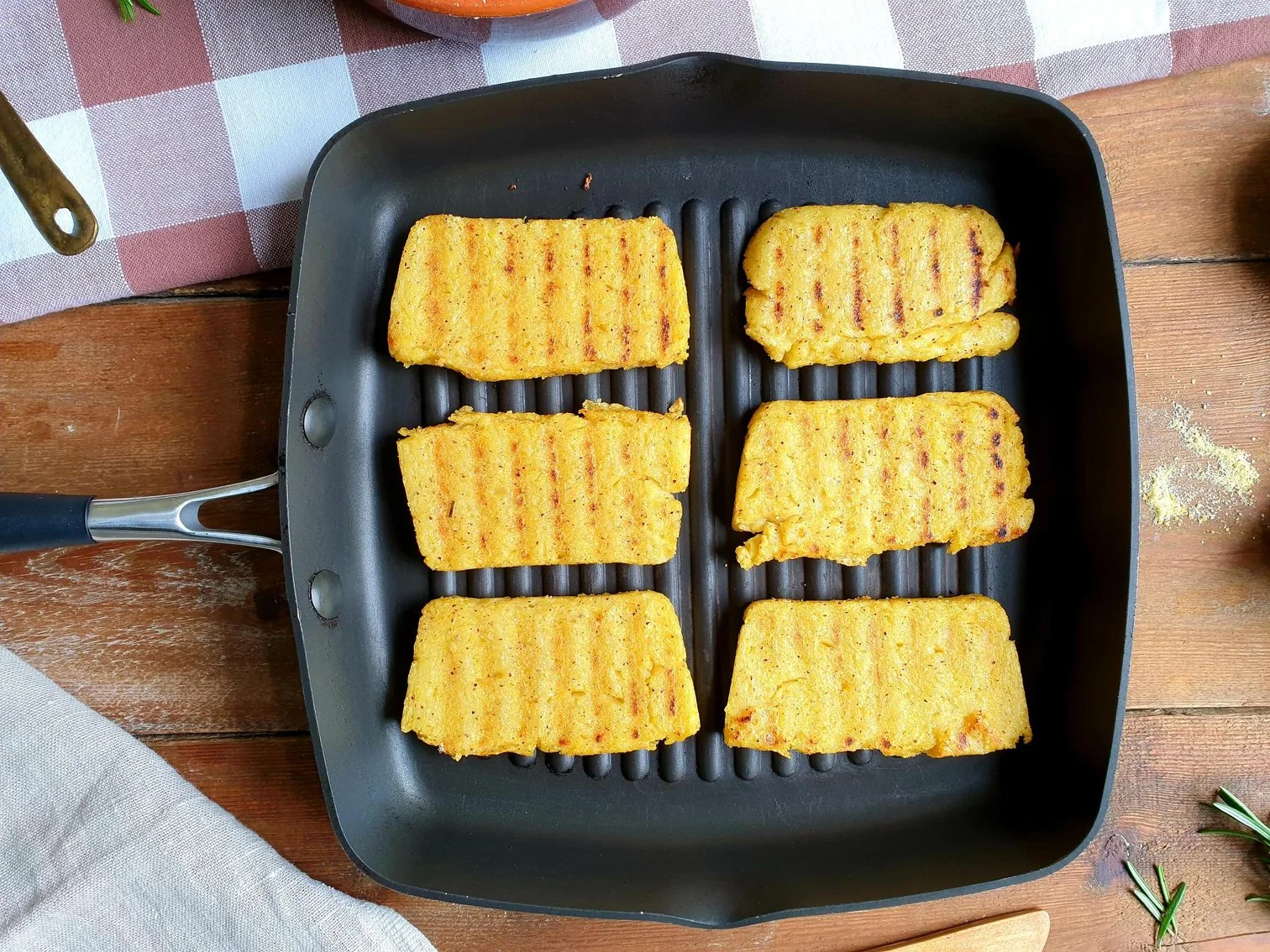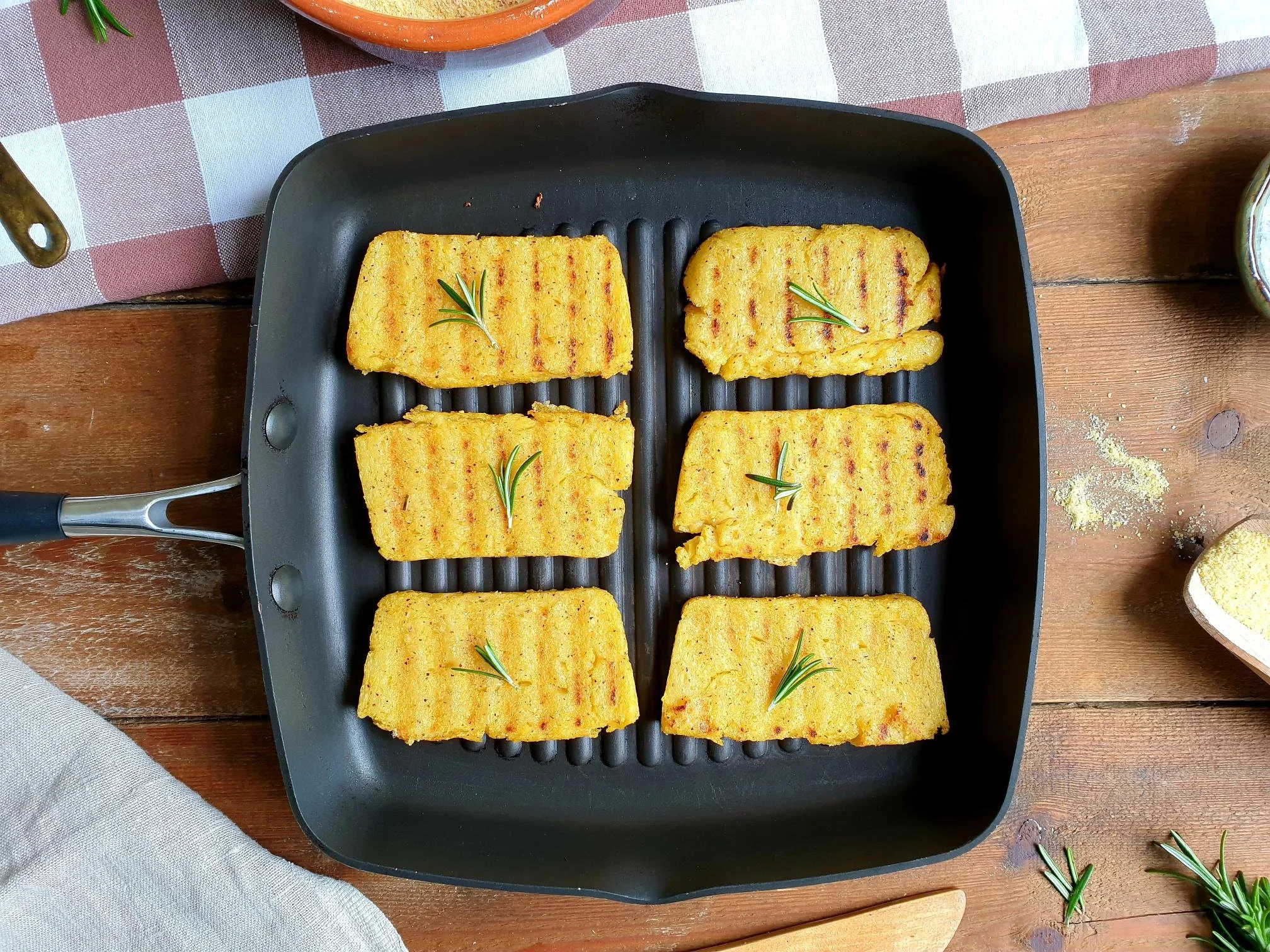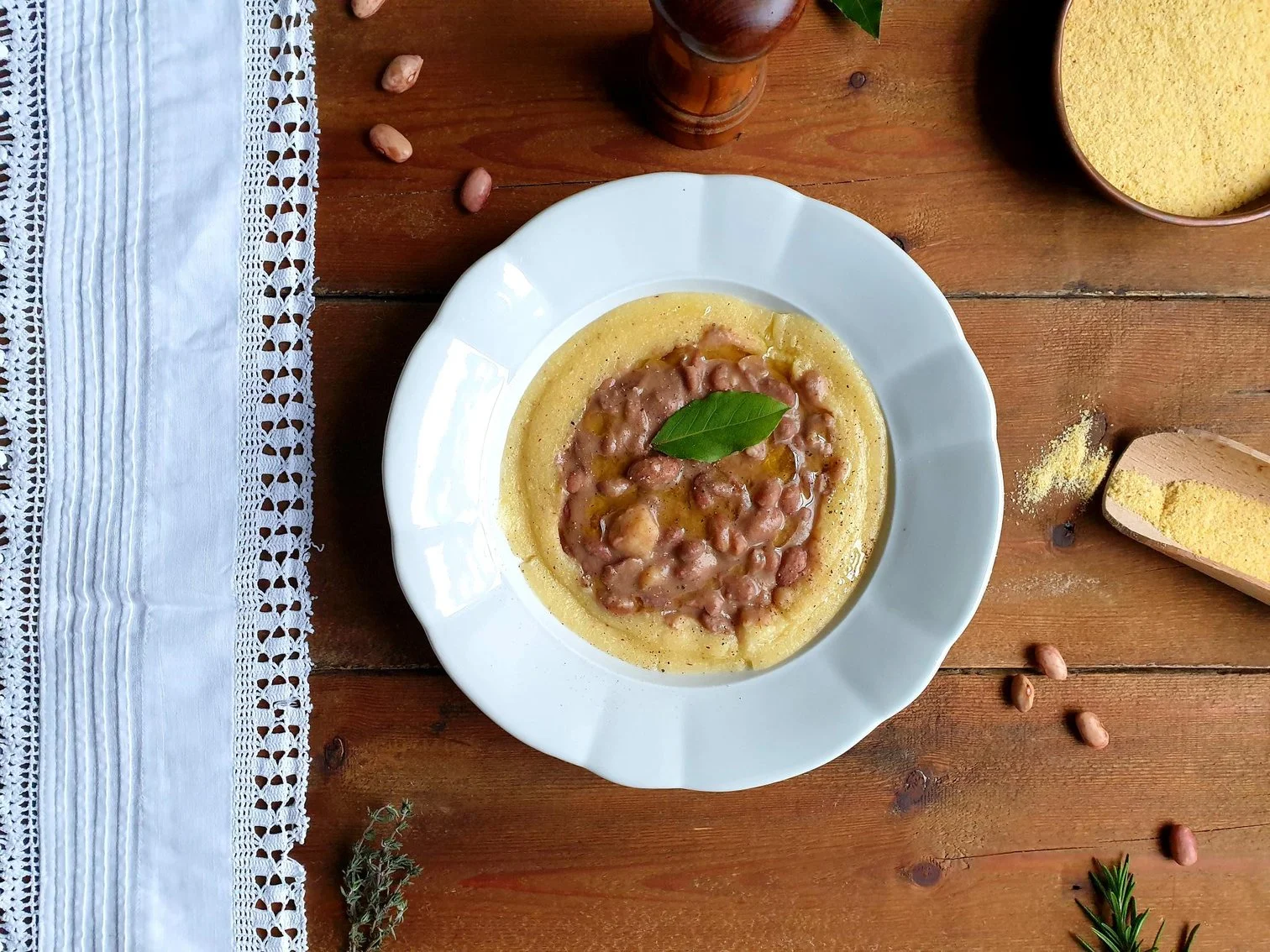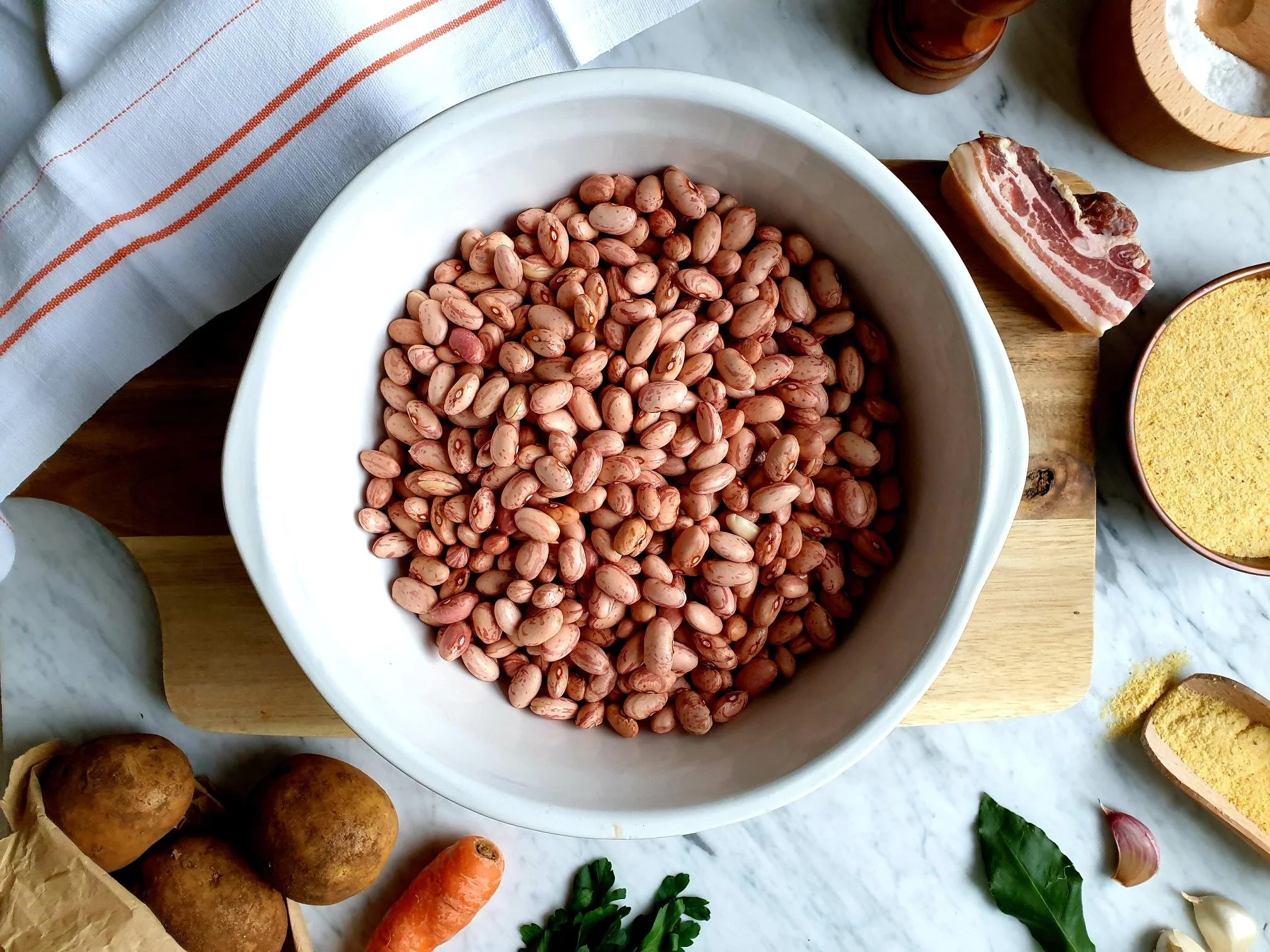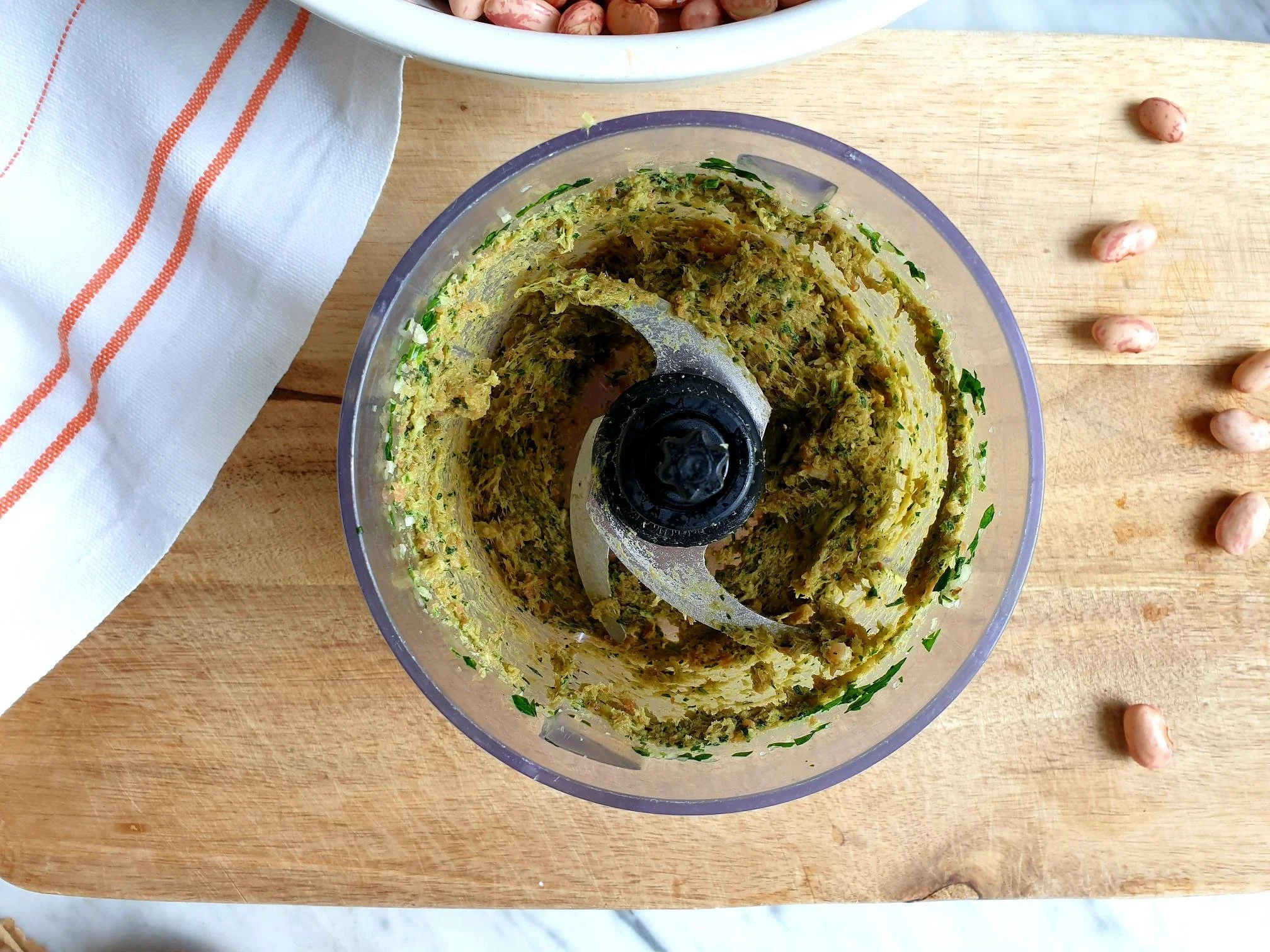Grilled Polenta Recipe
Polenta, despite being offered and marketed as one of the fairly recent gastronomic fashions in high end restaurants around the world, has incredibly humble origins, it represents a staple peasant food that fed the poorest of the poor.
Grilled polenta slices taste great, they are crispy on the outside, soft on the inside, and will have a very light smoky flavour when barbecued, they are very easy to make and incredibly practical and convenient, as polenta mixture can be prepared ahead of time.
Polenta is incredibly versatile, in fact, there is nothing really that does not go with grilled polenta, it is one of the best side dishes you can pick to go with your grilled or barbecued meat, fish or vegetables.
Grilled polenta slices topped with vegetables (sautéed mushrooms, peppers, courgettes), different types of cheeses, cured meats and spreads make the most sophisticated appetizers and finger food to be served with drinks.
Polenta in Slovenin Istra is traditionally enjoyed with different meat, fish or bean stews, and Venetian style liver. What is wonderful is polenta with creamed salted cod, and even a simple fried egg can accompany humble polenta.
Polenta used to be also eaten for breakfast, however, this gastronomic ritual from the past has nowadays almost disappeared. Only a handful of elderly people would still have it as the first meal of the day, perhaps as a nostalgic reminder of their youth.
My nona told me that cooled and set polenta would be cut into smaller pieces, put into a bowl, then some milk would be added, and a pinch of sea salt to counterpart the natural sweetness of the milk. This provided a very nourishing morning meal. I guess it was like an old-fashioned concept of bowl of cereal with milk.
Polenta is also incredibly popular in the neighbouring region of Friuli, in Italy, where maize flour cooked in milk, speciality from the region called Suf, used to be eaten either for breakfast or as an evening meal, this dish provided a nutritious and easily digested plate of food.
Nowadays, polenta, being soft cooked, hard cooked or grilled, it is still very much loved and is a recurrently cooked dish in almost every household for unpretentious mid-week meals, or during festivities. Its popularity has never decreased and reflects a true identity of the local people and is deeply rooted in the gastronomic traditions of the area.
I am sharing here the recipe for this polenta dish where hot cooked runny polenta would be traditionally poured on round wooden boards, and not into loaf tins like I do for practical reasons. When polenta was completely cooled and set so it becomes firm it would then be cut into strips or random shaped chunks, and then quickly pan fried (only left over polenta used to be grilled).
Recipe
Ingredients
250g yellow or white polenta (instant polenta) maize flour
1 litre of water
sea salt
Method
Before you start cooking the polenta prepare the loaf tin. With a brush (or just with your hands and fingers) slightly oil the loaf tin, this will prevent polenta from sticking.
Pour the water into a pan and bring to boil (to speed up the process you can use hot boiling water directly from the kettle).
Lower the heat and gradually start slowly pouring the polenta into a hot water, whisk constantly.
Cook and whisk until the mixture begins to thicken and becomes smooth in consistency with no lumps. Follow the instruction how long to cook the polenta (timing may vary a bit, mine took about 10 minutes).
During the cooking process polenta mixture will create air bubbles that will pop (a bit like tiny volcanos erupting, be careful not to burn yourself).
Taste and adjust the seasoning with sea salt.
Pour cooked polenta into a loaf tin, smooth the top with the back of the spatula or a wooden spoon. (you can pour the cooked polenta into a baking tray, previously lined with backing parchment, spread it and flatten it, when the polenta is completely cooled, cut it in whatever shape you like, strips, triangles, rounds or use cookie cutters of your choice).
Allow the polenta to set and cool completely at a room temperature or put it in the fridge to speed up the process.
Tip the polenta onto a chopping board (it should be completely moulded into the shape of your loaf tin).
Cut the polenta loaf into 1-1.5cm (about ½ inch) slices.
Preheat a non-stick griddled pan (indoor grill pan) or a regular non-stick frying pan over a medium high heat for a few minutes.Place polenta slices in the griddled pan and charcoal grill on a fairly high heat for a few minutes. Do not move the polenta around., let the polenta slices sizzle in the pan undisturbed (do not overcrowd the pan and work in batches).
Turn the slices the other side and grill for another few minutes. Be patient with this process, only turn and flip the slices after you have tested the edges, flip the slices when the polenta easily lifts off the grill pan.
Polenta slices should have grill marks when fully grilled and have crispy outside layer.
Serve hot immediately.
Just a thought
This is a very convenient dish, you can make polenta mixture about up to two days before you actually need to grill it.
Although not done traditionally, you can cook the polenta with a stock of your choice for extra flavour and you can also add some grated cheese of your choice to a hot polenta mixture.

